 | | | Collecting and preserving meteorites since 1998. |
| |
|  |
|
|
We have been collecting meteorites for over twelve years. This stone is the most spectacular breccia I have ever seen. Large stran clasts mixed with eucritic and other strange material...it's no ordinary meteorite.
Dr. Anthony Irving has recently confirmed that the breccia contains at least four different types of clast lithologies. The first two were the expected eucritic and diogenitic components of an HED meteorite. The metal-rich brown clasts appear to be H-chondrite impact melt fragments -- and they represent the first ever ordinary chondritic material found in an HED meteorite. The fourth lithology has yet to be identified, but it appears visually similar to some LL6 breccias. It is probably Fe-depleted H-IMB material.
The main mass weighed 324.4 grams. We removed just enough material to make a nice window into the stone; the main mass of 207.1 grams will not be cut again.
The slices offered below are the only pieces of this meteorite that will be available, totaling roughly 90 grams. We purchased this stone over two years ago, and are aware of no meteorites that look similar or could be paired.
.JPG)
324.4 gram main mass before cutting.
This stone has multiple large clasts that have been analytically confirmed to be from a distinct parent body, making this one of the few examples of a "rubble pile" meteorite in the world. There are a few somewhat similar meteorites - howardites and aubrites that contain small amounts of carbonaceous-chondrite material (usually no more than 1-2% of the area of a given slice).
This meteorite is unique in that the different lithologies are both different genetically (differentiated and undifferentiated material from different sources) and occur in major abundances. From a gross visual estimate of the slices, it appears that over 30% of this stone consists of chondritic material. The only other meteorite to my knowledge that contained such proportions of drastically different material was Almahata-Sitta. But while ureilites are achondrites, they are not differentiated (they consist of melted, but unfractionated, chondrite-type material). So NWA 3197 truly is one of a kind in that it is a pairing of large quantities of both differentiated and undifferentiated material.
The presence of foreign material in an HED breccia, in this case, is easily explained with the low-velocity impact of a chondrite asteroid/meteoroid into 4-Vesta (click for a high-resolution photo of 4-Vesta from the Dawn mission). Or perhaps it could be explained by the collision between an ejected fragment of 4-Vesta and another small meteoroid.
Either way, something chondritic hit something made of HED material while in space at low enough velocities that the impactor and target rock weren't vaporized. The fact that such an event happened (and this rock resulted) is pretty darn cool.
One similar meteorite (NWA 5743) was thought to exist -- it was sold as "The Enigma Stone" by a prominent dealer, and was said to contain HED and lodranitic components. But, the "lodranite" material turned out to be Fe-rich diogenite, still HED. That stone still sold for hundreds of dollars per gram.
None of these slices is polished because the material is so soft and friable that it simply won't take a shine. That being said, the cuts were made on Marlin Cilz's wire saw, and have been sanded on one side; I doubt anyone could have done a better job. Each slice comes in a membrane box with a Utas Collection label.
Two part-slices [3.823 & 9.185 grams] will be added to this page soon. Full slices are below.
16.862 gram complete slice - $4,215
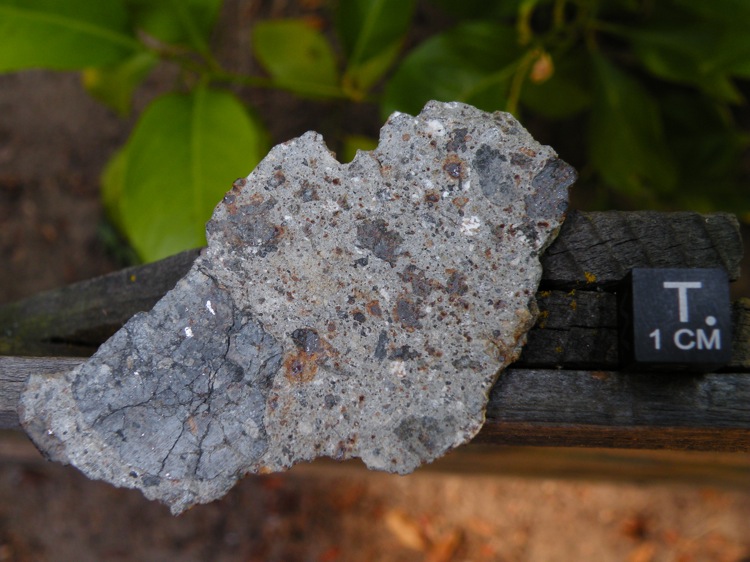
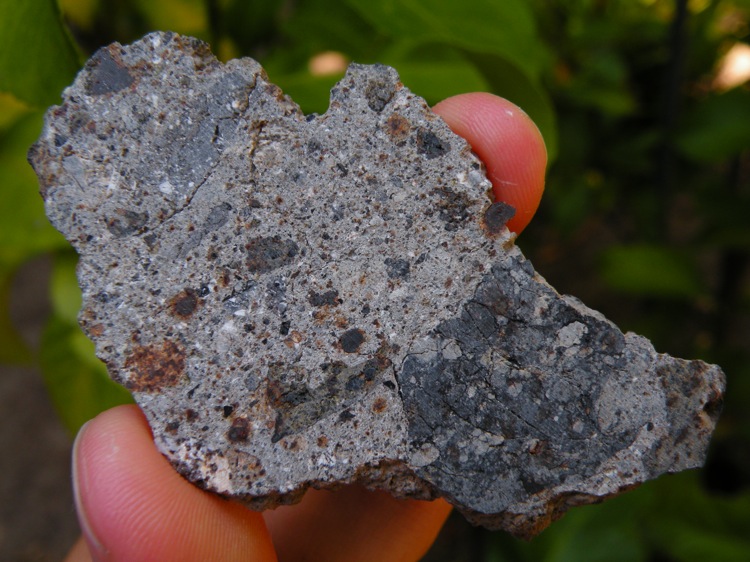
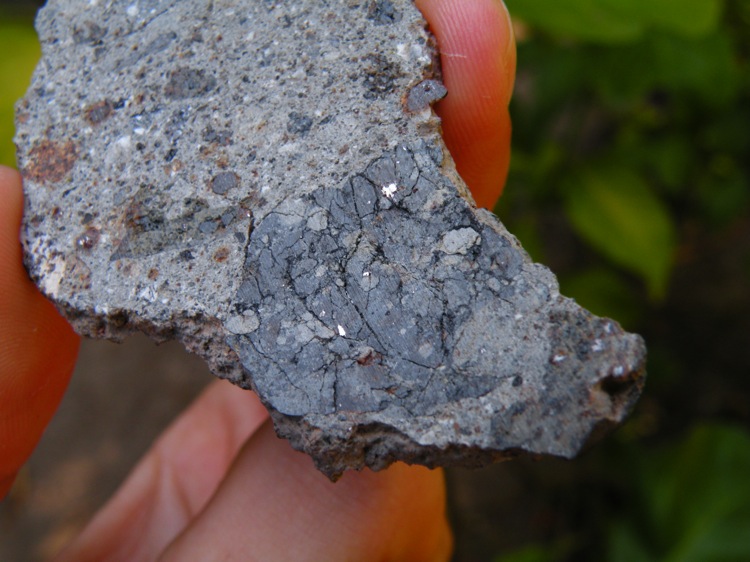

Amazing full slice - the large clast on the right appears to be metal-depleted and shock-melted chondritic material. Also of note are the darker green patches on either side of the large clast. I believe they are Fe-rich diogenitic material, but I am not certain. There's a lot going on in this slice...
16.862 grams - $4,215
Send an Email
14.514 gram complete slice - $3,625
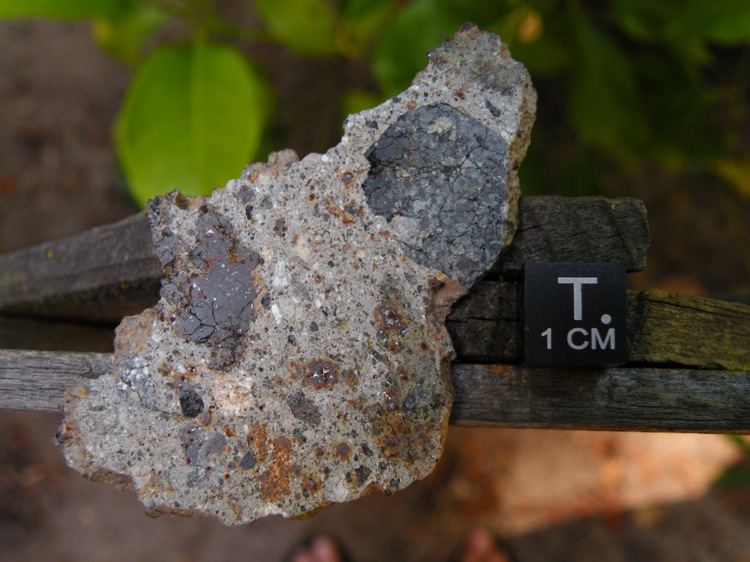
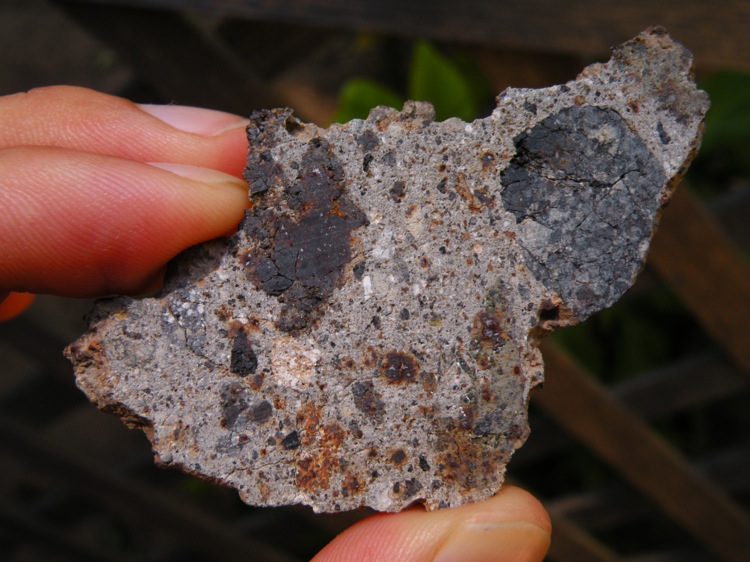
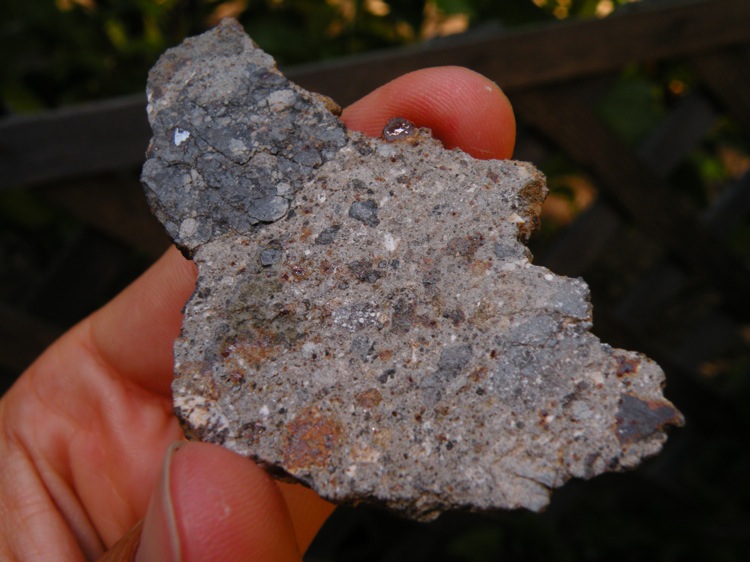
Great mix of all materials - metal rich and poor clasts, diogenitic component, and...other stuff, by the look of it. Great example of a very complex rock.
14.514 grams - $3,625
Send an Email
20.891 gram complete slice - $5,200
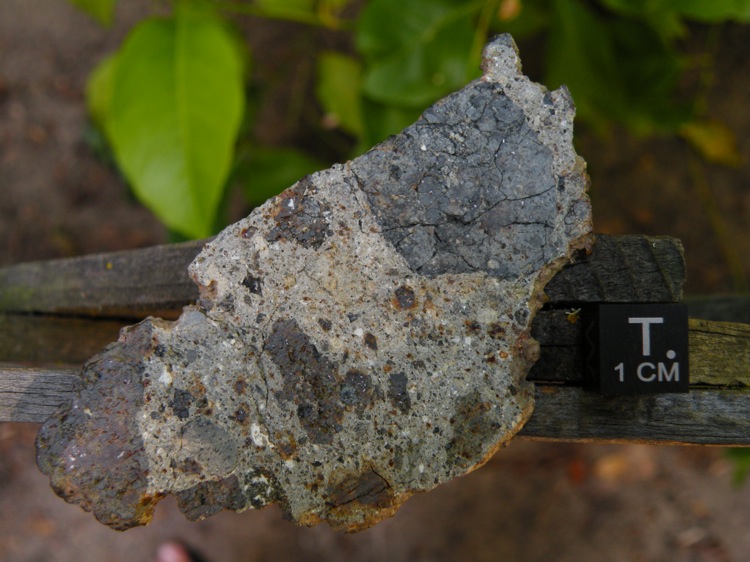
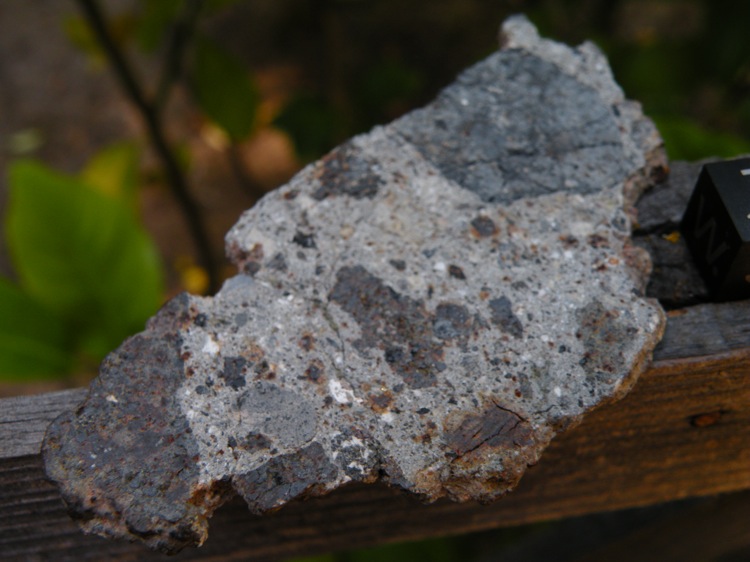
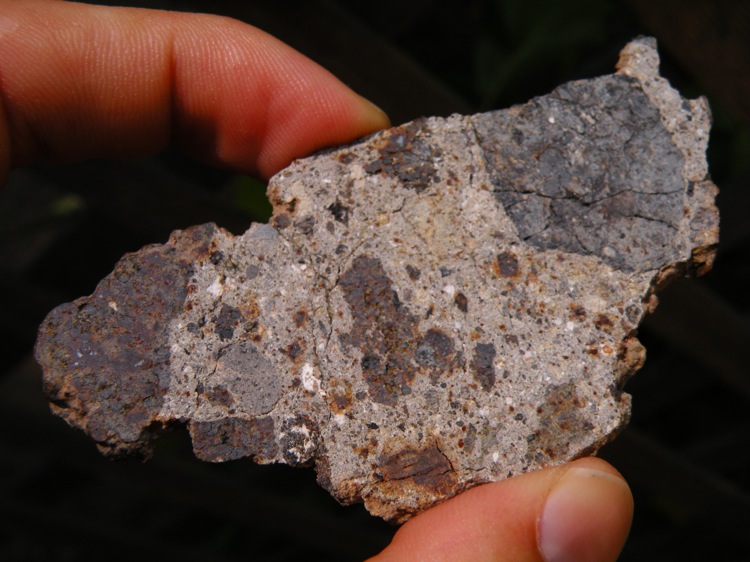
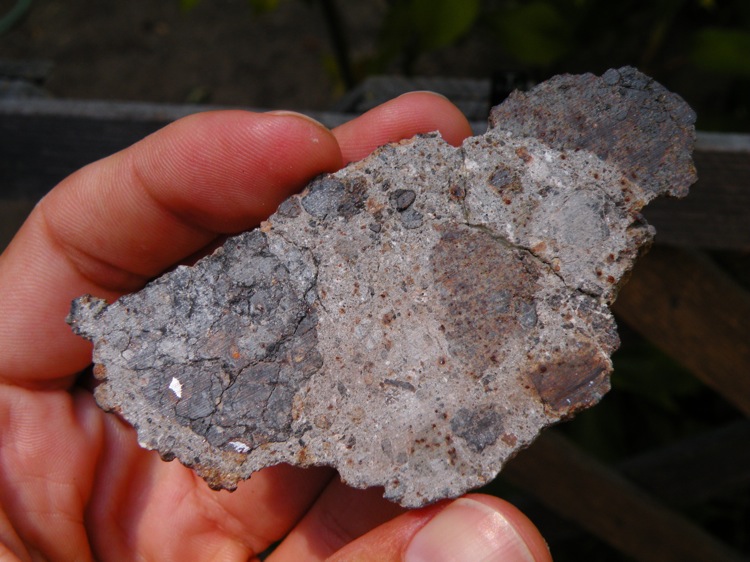
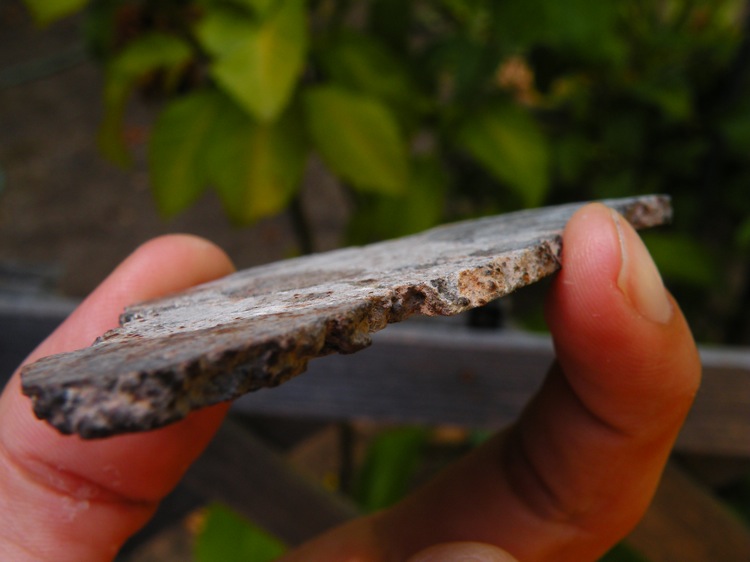
Crazy slice - the chondritic components approach 40% of the total surface area of this one. Also some great coarse-grained eucritic material and some other stuff. Best example of a rubble-pile asteroid I've ever seen on Earth.
Of note - when this slice came back from Marlin, there was a scary-looking crack in it, so I applied a small amount of epoxy to both sides of the crack with a needle. It could probably be safely removed with acetone, but I applied it because the slice looked very fragile as it was.
20.891 grams - $5,200
Send an Email
|
| | |
|
